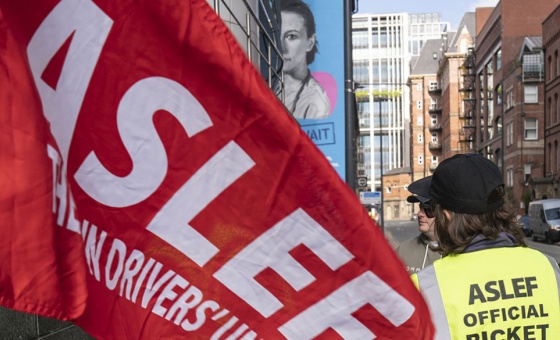This is the last article you can read this month
You can read more article this month
You can read more articles this month
Sorry your limit is up for this month
Reset on:
Please help support the Morning Star by subscribing here
THE word “forest” was brought to England by the Normans, and it didn’t have much to do with trees.
A forest was an area of mixed land — fields, scrub, woods, marsh, heath — in which only the king, or those he licensed, were allowed to hunt. The establishment of forests was an attack on the ancient freedoms of the high and the livelihoods of the low which led to centuries of class conflict.
As the Anglo-Saxon Chronicle put it, William the Conqueror “set apart a vast deer preserve, and imposed laws concerning it. The rich complained, and the poor lamented, but he was too relentless to care, though all might hate him.”
Hunting was central to upper-class Norman life in a way that it hadn’t been with England’s pre-Conquest rulers. The Normans hunted for sport, certainly, but more importantly for meat; the king and the nobles had large households and staffs that needed feeding, and they hosted diplomats and other visitors who had to be banqueted.
This was especially difficult during the winter, when farmed meat was not available. Gifts of meat and timber were also a useful means by which kings could keep favour with influential people. Historians suggest that most of the actual hunting in the forests was done by hired professionals.
William and his successors laid exclusive claim to the resources of vast stretches of England, and created a paramilitary bureaucracy to police this afforestation. The enforcers known as Foresters were among the most hated and feared men in the whole kingdom, their job being to protect, on behalf of the monarch, the “venison and vert” of his forests. Venison meant any wild animal considered worth hunting, not just deer, while vert was the name given to the various plants necessary for the prey to thrive.
In 1184, Henry II gave himself the authority to declare any piece of land, anywhere, as being afforested and therefore no longer subject to common law. By the 1200s, about a third of southern England had been set aside as forest. Not just hunting within a forest, but grazing animals, and gathering firewood or nuts or berries, was banned. If you happened to live in what was now officially a forest, it’s hard to imagine how you were supposed to keep body and soul together.
As if being excluded from most of the best land in the area wasn’t bad enough, people living near forests also had to put up with straying deer — then, as now, a serious agricultural pest — and were banned from fencing their fields to keep the deer out. In a kind of exclusion zone around the forests, the subjugated English were subject to all manner of legal restrictions on, for instance, the ownership of dogs.
Poaching, needless to say, became a way of life — and for all classes. With nets, crossbows, or hounds, according to their means, poor and posh alike went after the king’s deer.
By repute, the worst offenders were the clergy, presumably because they could get away with it — if nicked, they could only be tried in church courts, which tended to be sympathetic.
Almost everyone has heard of Magna Carta (1215), but rarely mentioned is its spin-off, Carta de Foresta/The Charter of the Forest, issued on November 12 1217 and not repealed until 1971, under the Wild Creatures and Forest Laws Act.
While the Great Charter — forced on the king by the barons’ rebellion — was indeed a constitutional landmark, establishing the principle that even the government is subject to the rule of law, it wasn’t of great or immediate significance to common folk.
The Charter of the Forest, on the other hand, was a life-changing measure to the great mass of people who depended on the land. Both were the result of ongoing struggles between different economic classes, and the shifting fortunes resulting from them.
The big difference is that the Forest Charter came about because of a need to pacify the lower orders, not the upper.
It is often held up as one of the greatest victories ever won by the ordinary people against the state. It’s the first time in our history that the rights of the common man were explicitly acknowledged.
The Charter began a process of disafforestation, and restored the legality of traditional rural activities such as estover (collecting firewood), pannage (pasturing pigs), turbary (taking turf for burning), agistment (grazing), and collecting honey.
The Charter was a reform, not a revolution: one clause reads “Henceforth, no man shall lose his life or suffer the amputation of any of his limbs for killing our deer. If any man is convicted of killing our deer, he shall pay a grievous fine, but if he is poor and has nothing to lose, he shall be imprisoned for a year and a day.”
But gradually, the hunting forests of the Normans retreated into history and the word forest itself eventually came to mean something different.
(Everything’s a matter of context, of course; a few hundred years later there were widespread riots against disafforestation, which at that time was a means to allow privatisation of land by the crown.)
It’s hard to think of any single piece of legislation enacted on this island since 1217 that was more radical in spirit or in practice than the Forest Charter. But we live in hope.
You can sign up for Mat Coward’s Rebel Britannia Substack at www.rebelbrit.substack.com for more strange strikes, peculiar protests, bizarre boycotts, unusual uprisings and different demos.











